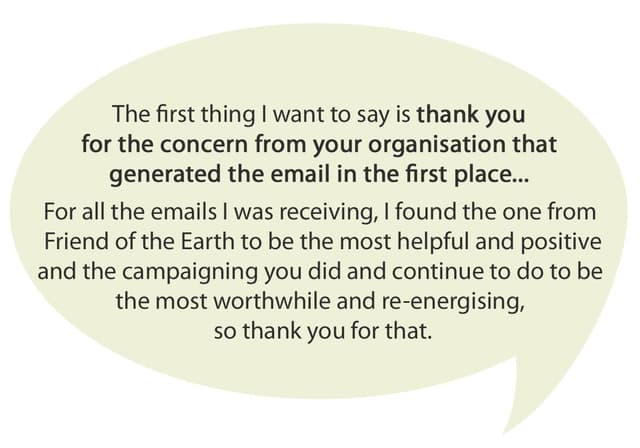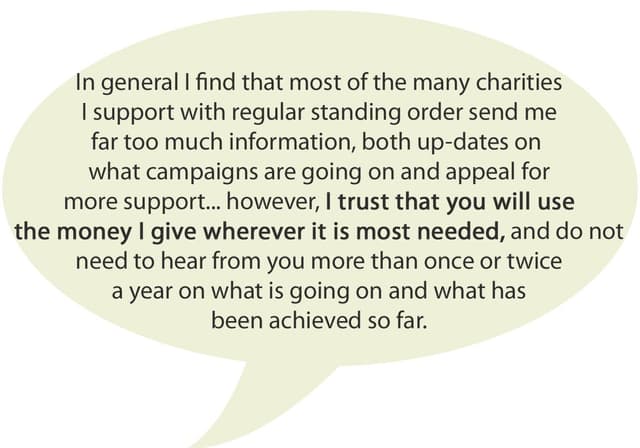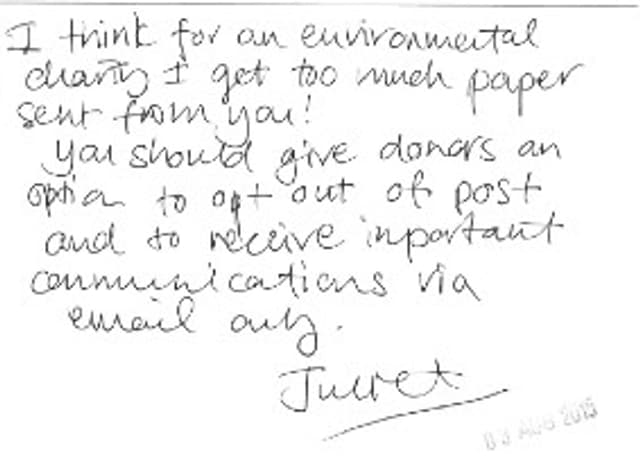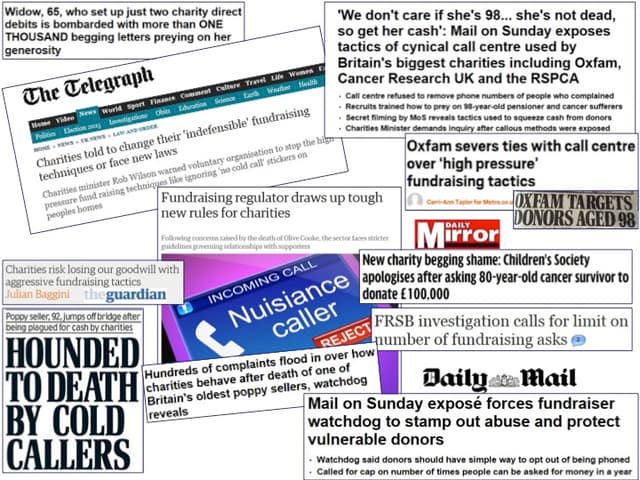Friends of the Earth: Looking after supporters when the media storm hit
- Exhibited by
- SOFII
- Added
- September 28, 2016
- Medium of Communication
- Direct mail, telephone, e-mail
- Target Audience
- Individual donors, supporters
- Type of Charity
- Environmental
- Country of Origin
- UK
- Date of first appearance
- June 2016
SOFII’s view
In the wake of media and press controversy surrounding fundraising and fundraisers in 2015, Friends of the Earth took the bold decision to contact their supporters directly. They asked them how the organisation could do more for donors and give them a positive experience. By giving their supporters space to freely express themselves, Friends of the Earth set an example for how to value and support donors – with positive results for all concerned.
Summary / objectives
The media storm that blew up after the death of Olive Cooke, wrongly alleged to have been hounded to committing suicide by charity communications, prompted Friends of the Earth to hold internal discussions as to how they should respond. They did this even though they weren’t named as one of the offending organisations.
They decided to get in touch with their supporters by email and letter to acknowledge the negative coverage. They asked for feedback on the supporters’ experience of Friends of the Earth communications, and offered them a chance to comment freely on the charity’s practices.
Special characteristics
The email went to 51,000 active donors and a letter was sent in the post to a further 67,000 active donors. The letter was written and signed by Joe Jenkins, the acting chief executive, and recipients received half an A4 page-sized space in which they were encouraged to freely write their comments and thoughts. Friends of the Earth’s supporter care team then went through all the responses to compile a detailed picture of how the organisation was perceived by its supporters and how to respond and change any practices that weren’t appreciated.
The key factor for all involved was honesty. Friends of the Earth were open and honest with their supporters, acknowledging that mistakes had been made in the wider sector and asking in return for frankness and honesty from those that donate to the charity’s cause. Crucially, they thanked the supporters and asked them what Friends of the Earth could do differently.
Subsequently, Friends of the Earth included a communication preferences survey in the spring 2016 edition of their magazine earthmatters, to get a more detailed analysis of their supporters’ feelings and thoughts. This was mailed to 65,500 supporters.
Costs
Not disclosed. It’s a process that takes time and money, but Kathryn Holloway, interim deputy head of supporter gifts and engagement, believes that the better insight that this provided – and the two-way communication it engendered – definitely made it worthwhile.
Results
• E-mail responses: 323
• Friends of the Earth wrote back to 113 of those who wrote emails
• Letter responses: 2,940
• Friends of the Earth wrote back to 407 of those who wrote letters
• Approximately 700 supporters opted out of receiving fundraising calls and 234 requested no further contact at all
• Legacy tick box business reply envelope (BRE) returns – 32 responses (over 500 per cent increase on usual response).
• About 50 per cent requested information. About 50 per cent confirmed they’d included a gift in their will
• Nobody had previously confirmed an interest in legacies (i.e. by requesting legacy information or confirming the gift in their will)
• Lots of comments about the volume of emails Friends of the Earth typically send (there were requests for quarterly email) – most people prefer email over paper or phone
• Updated 20 records as deceased
• The communication preference survey was completed by 8.14 per cent of supporters
Overall, most comments were positive and the campaign ensured that people who don’t respond knew how they could get in touch. Friends of the Earth learned that their donors want to talk to them, about everything, and that being transparent and open creates trust between causes and supporters.
As a result of the campaign, other charities have started going through the same process. Friends of the Earth are continuing to promote and remodel their supporter care team. They are making their tone more informal and friendly – and it’s now very easy for supporters to get in touch.
Here are some examples of the feedback they received:
‘The first thing I want to say is thank you for the concern from your organisation that generated the email in the first place... For all the emails I was receiving, I found the one from Friends of the Earth to be the most helpful and positive and the campaigning you did and continue to do to be the most worthwhile and re-energising, so thank you for that.’
‘In general I find that most of the many charities I support with regular standing order send me far too much information, both up-dates on what campaigns are going on and appeal for more support... however, I trust that you will use the money I give wherever it is most needed, and do not need to hear from you more than once or twice a year on what is going on and what has been achieved so far.’
Merits
Friends of the Earth moved quickly to address a serious issue regarding how charities and fundraisers are perceived by the public, which was reassuring for their supporters and very informative for the organisation itself. It allowed them to improve where needed and focus on their strengths. This campaign could serve as an example for the sector as a whole.
Other relevant information
This campaign was presented by Paul Amadi at the 2015 edition of I Wish I’d Thought of That (IWITOT) in London.
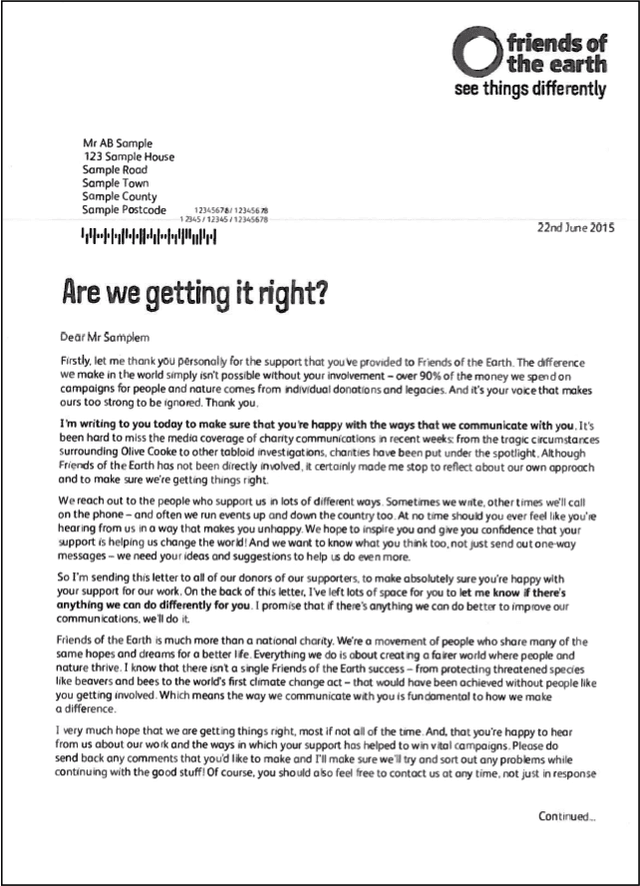 View original image
View original image
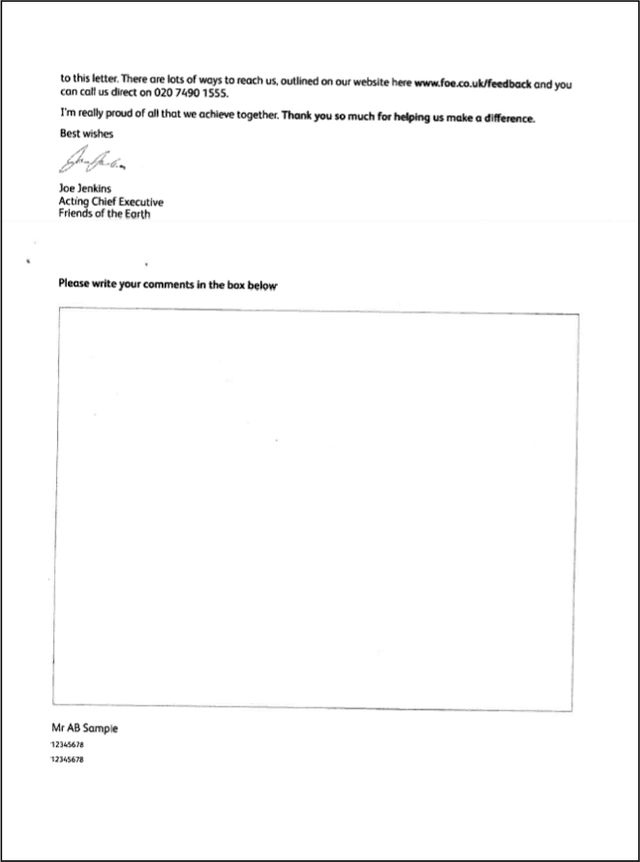 View original image
View original image
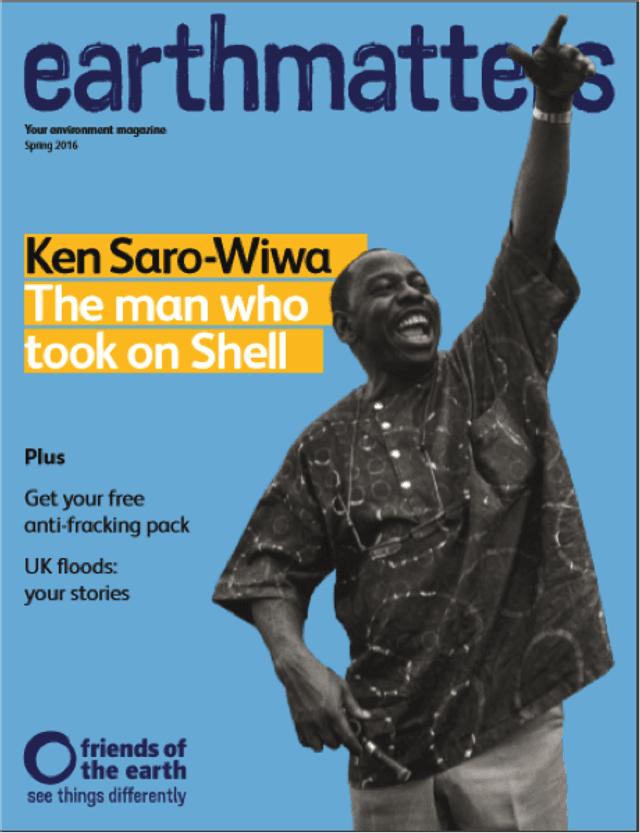 View original image
View original image
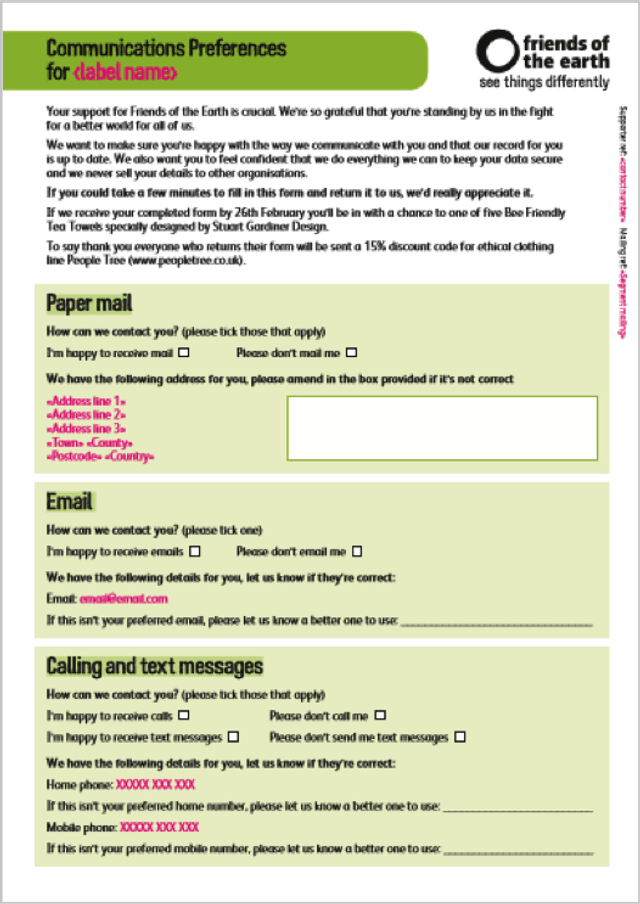 View original image
View original image
